On paper, you’d think the Labrabull—a mix of a Labrador Retriever and an American Pit Bull Terrier, would clash, right? Labradors are everyone’s buddy: friendly, affectionate, and always eager to please. Pit Bulls, on the other hand, pack a lot of loyalty, are fiercely protective, and have a robust presence. Yet, when you merge these traits, you get a strong, loyal, loving companion.
This blend results in a dog that might just steal your heart faster than you can throw a ball. Curious about bringing one of these pups into your home? Let’s look at what makes the Labrabull a unique and potentially perfect addition to your family.
TABLE OF CONTENTS
- Labrabull Quick Summary
- Labrabull Parent Breeds
- Labrabull Physical Characteristics
- Labrabull Personality and Temperament
- Labrabull Care Guide
- Labrabull Health Issues
- Labrabull Puppies
- FAQs about the Labrabull
- The Perfect Definition of a Gentle Giant
- Other Labrador Retriever and American Pitbull Terrier Mixes
Labrabull Quick Summary
Labrabull Parent Breeds
From Adobe Stock
Labrabulls are designer dogs, meaning they are a mix of two purebred parents. Many major dog clubs don’t recognize designer dogs as a breed as there can be a lot of variations in their offspring. This is the case with the Labrabull too.
The American Kennel Club does not recognize this mix. However, the Dog Registry of America is one of the few that does. If you’re thinking about adopting one of these adorable puppies, here are some organizations dedicated to rescuing this mix: Pittie Love Rescue, Bully Paws Pitbull Patriots, American Lab Rescue, and Save-a-Bull Rescue.
By understanding the history of its parents we can get to know the breed a little better.
Labrador
From Adobe Stock
Origin
The Labrador Retriever, affectionately known as the Lab, hails from Newfoundland, not Labrador, as the name might suggest. In the early 1800s, Labs were used by fishermen to help retrieve fishing nets and loose fish from the cold North Atlantic waters. They were later refined as a breed in England, where they were favored by hunters for their remarkable retrieving abilities, especially in water.
Physical Characteristics
Labradors are sturdy, medium to large dogs, known for their athleticism and balance. They typically stand about 21.5 to 24.5 inches tall at the shoulder and weigh between 55 and 80 pounds. Labs have a short, dense, water-resistant coat, which helps them in cold water, a distinctive “otter” tail, and a clean-cut head with broad back skulls and moderate stop. They come in three colors: chocolate, black, and yellow.
Temperament and Behavior
Labradors are famously friendly. They are known for their good nature and are often described as gentle, intelligent, and very eager to please. I often tell pet parents that a Lab is a great choice for families because they are generally very patient with children. They are also highly social dogs; hence, they do not enjoy being left alone for long periods and are happiest when they are part of family activities.
Labs are also known for their high energy levels, especially as young dogs, which makes them great companions for active individuals or families. They are keen and easy to train, responding best to positive reinforcement techniques such as treats and praise. Given their sociability, early socialization is crucial to ensure that they grow up to be well-rounded dogs.
Pitbull
From Adobe Stock
Origin
The American Pit Bull Terrier’s lineage can be traced back to the early 19th century in the United Kingdom, where they were developed by crossing various bulldogs and terriers to create a versatile breed for hunting, farm work, and, unfortunately, blood sports like bull-baiting. After these sports were banned, the breed was brought to the United States, where it was further refined and used for similar purposes.
Physical Characteristics
The American Pit Bull Terrier is a study in athleticism and strength. Standing about 17 to 21 inches at the shoulder and weighing 30 and 65 pounds, they showcase a compact, muscular build that underlines their capabilities as working dogs. I’ve discovered that their coat is short and smooth, coming in a wide range of colors and patterns (check out the pattern on the brindle pitbull here). Their expression is alert and intelligent, with eyes that reflect a keen awareness of their surroundings.
Temperament and Behavior
The temperament of the American Pit Bull Terrier often surprises those unfamiliar with the breed due to their media reputation. These dogs are enthusiastic, loving, and incredibly loyal to their families. They possess a high level of intelligence, which, coupled with their eagerness to please, makes them quite trainable. However, they do require consistent leadership to manage their strong will and ensure they are well-adjusted members of society. Socialization should start early, as it helps to build a friendly and confident dog that is comfortable in various situations. They are active dogs who thrive on physical and mental stimulation to channel their energy positively.
Labrabull Physical Characteristics
From Adobe Stock
Now that you know the parent breeds, let us discuss the characteristics the mix gets from the parent breeds.
Size
Their height and weight will largely depend on which parent they mostly take after. However, coming from medium to large-sized parents this dog is considered to be a medium-sized dog too. As such, I’ve learned that a Labrador Retriever mixed with Pitbull can measure between 20 to 24 inches. Males usually grow up to 24 inches whilst females up to 22 inches.
Their weight will vary greatly too, the lightest being 45 pounds with the heaviest weighing 90 pounds. I recommend considering a pet’s size when adopting because you don’t want to get a bigger dog than you can manage or accommodate.
Appearance
Labrabulls are more likely to take on the physical characteristics of the Labrador; a dog with an athletic body with a soft complexion. However, I find that it is possible to find some with the muscular yet agile body of the Pitbull.
Their almond-shaped eyes can come in brown or hazel and their nose in black or brown too. I’ve noticed that the standout features of a Lab Pitbull Mix are the white markings on their chest, paws, and tips of the tail.
Coat and Colors
From Adobe Stock
The Labrabull, like its Labrador and Pit Bull parents, typically sports a short, straight coat which contributes to a light to moderate shedding pattern. During the warmer months, the shedding does pick up a bit. I always advise pet owners to brush their dogs a bit more frequently during these times to help manage the shedding and keep their homes cleaner.
One of the exciting aspects of crossbreeds like the Labrabull is the variety of colors they can inherit from their diverse genetic backgrounds. These dogs can display a wide range of colors, including black, grey, white, brown, yellow, and even silver. It’s not uncommon for a Labrabull to have a beautiful mix of these colors, often accented with white markings that might appear on their chest, paws, or the tip of their tail.
In terms of color shades, the diversity continues. The brown on a Labrabull, for instance, can vary from a deep, rich chocolate to a lighter medium brown. Similarly, the yellow shades can range from a bright golden to a more subdued tan or fawn.
Labrabull Personality and Temperament
It’s a common misconception that Labrabulls, given their Pit Bull heritage, are inherently aggressive. In reality, these dogs often exhibit a surprisingly gentle demeanor. Much like any breed, the key to their behavior lies in proper upbringing rather than any innate tendency towards aggression.
Labrabulls are notably protective and exhibit strong loyalty to their families, which can manifest as initial wariness or barking at strangers. However, once they recognize someone as non-threatening, they’re usually quick to seek affection, enjoying activities like tummy rubs or a lively game of fetch. Their high energy and prey drive may prompt them to chase smaller animals, so they benefit from reminders to curb these impulses.
In my observations, Labrabulls are exceptionally sweet-natured and playful. They interact well with children and other animals, often thriving in a social environment where they can be the center of attention. While they do have a protective streak, it’s rare for them to show aggression unless provoked. Their intelligence and eagerness to please make them highly trainable, and they respond well to owners who provide consistent guidance and support.
Compatibility with Families
From Adobe Stock
This dog makes a great family pet!
With the happy-go-lucky and affectionate side of the Labrador mixed with the playfulness of the Pitbull, it’s no wonder why they make the perfect family companion. I’ve noticed that a well-socialized Labrabull interacts well with people of all ages including children. If socialized from a young age, you shouldn’t have any problems introducing this dog to your family home… even if you already have pets.
Labrabull Care Guide
I’ve noticed that this breed isn’t ideal for first-time dog owners because Labrabulls require a lot of socialization and someone with handling experience to teach them what is expected.
Hence, I find that this breed is best suited for an active family, with or without children. This kind-natured yet willful dog requires someone who has experience training a dominant dog. The following are other care needs:
Feeding
A balanced diet is essential for any dog, and Labrabulls are no exception. It’s important to choose a high-quality dog food that meets the nutritional levels established by the AAFCO Dog Food Nutrient Profiles. The choice between dry kibble, wet food, or a raw diet should be based on the dog’s health, preference, and your veterinarian’s advice. Always ensure fresh water is available at all times.
Given the high energy levels of Labrabulls, if your dog is particularly active, you might need to adjust their food intake accordingly. Active dogs require more calories to sustain their energy levels, so slightly increasing their food portions may be necessary, especially if they engage in regular, intense exercise.
Below, I share some specific feeding guidelines based on my observations and general best practices in canine nutrition.
Puppy Stage
For Labrabull puppies, I recommend feeding them three to four times a day. Since they grow rapidly, their diet should be rich in protein to help with muscle development. Puppy-specific formulas are ideal as they are tailored to support growth and development needs.
Adult Dogs
As they transition into adulthood, Labrabulls should be fed twice a day. Portion control is key to preventing obesity, especially since Labradors are prone to weight gain. An adult Labrabull typically does well on about 2 to 3 cups of dry dog food per day, divided into two meals, but this can vary based on the dog’s size, age, and activity level.
Senior Stage
As Labrabulls age, their metabolism slows down, and their dietary needs change. Senior dog foods, which are lower in calories but high in fiber, can help maintain their health without putting on extra pounds. Monitoring their weight and adjusting their diet accordingly is crucial to manage age-related conditions.
Training and Exercise
Given the mixed breed nature, these dogs often exhibit high energy levels that need regular exercise and mental stimulation. You can observe the following guidelines:
Training
It requires a blend of firmness and positive reinforcement. Due to their willful and dominant tendencies, the handler must be confident and experienced. Starting obedience training at a young age is key, as puppies are more receptive to learning new behaviors and social cues. These dogs are intelligent and can enjoy training, but they indeed have a low tolerance for repetitive tasks. To keep them engaged, I recommend varying the training exercises and keeping sessions short and lively. This approach helps maintain their interest and enthusiasm.
Chewing is a common behavior in Labrabulls, much like their Labrador ancestors. To manage this, I suggest you start early with positive reinforcement, redirecting inappropriate chewing to suitable toys. Providing a variety of chew toys can keep their attention and save your furniture. Encouraging them to chew on these designated items rather than household objects is a strategy that has worked well for me.
Exercise
Labrabulls require substantial daily exercise to match their energy levels. An hour of physical activity is generally sufficient to keep them healthy and content. Due to their Labrador heritage, many Labrabulls are drawn to water and are excellent swimmers. Incorporating swimming into their exercise routine can be a wonderful way to vary their activities and cater to their natural inclinations.
I’ve found that visits to nearby lakes or rivers where they can swim freely are incredibly beneficial. Additionally, regular trips to the dog park can provide both physical and mental stimulation. These outings allow them to run freely, interact with other dogs, and reinforce their social skills. Ensuring they are well-socialized not only enhances their ability to play with other dogs but also helps mitigate any potential behavioral issues related to dominance or aggression.
Socialization
In my observations of raising and training Labrabulls, socialization has always been a cornerstone of their development. Starting socialization early is crucial for this breed, as it helps prevent any potential aggressive tendencies and ensures they are comfortable in various situations. I’ve observed owners taking Labrabulls to crowded parks, busy streets, and pet-friendly stores to expose them to different people, sounds, and environments. Consistent exposure to these diverse settings makes them more adaptable and less likely to react negatively to new experiences. Further, regular playdates with other dogs also play a significant role in their social training, teaching them the proper way to interact and communicate with their peers.
Mental Needs
Labrabulls are a breed with considerable intelligence and mental energy, which if not properly channeled, can lead to undesirable behaviors such as excessive chewing or barking. To meet their mental needs, I suggest incorporating a variety of brain games into their routine. Puzzle feeders, which require them to solve simple problems to access food, are particularly effective. Training sessions that teach new tricks or reinforce old ones also provide mental stimulation. Additionally, I’ve found that teaching them tasks that involve problem-solving or obedience work not only entertains them but also strengthens our bond.
Grooming
It should be a straightforward affair, largely thanks to their short coat, which simplifies many aspects of care. However, regular grooming is still essential to maintain their coat’s health, manage shedding, and ensure the dog remains comfortable and clean. Observations of Labrabulls in various settings have provided insights into effective grooming practices for this breed. I share those insights below.
Bathing
Frequent bathing is not necessary for Labrabulls unless they get particularly dirty. Observing their skin condition, it seems that over-bathing can strip their coat of natural oils, leading to dryness and irritation. Therefore, bathing them once every few months or when significantly soiled is generally sufficient. You should use doggy shampoo as it is gentler on the skin compared to human products.
Nail Care
Proper nail care is crucial for Labrabulls, as overly long nails can cause discomfort and even lead to problems with walking. I suggest checking and trimming their nails monthly, depending on how quickly they grow and the dog’s activity level. If the clicking of the nails on hard floors is audible, it’s a clear indication that trimming is overdue.
Ear and Teeth Care
Regular checks and cleaning of the ears are advisable to prevent infections, especially given that Labrabulls can be prone to ear issues. A gentle cleaner can be used to wipe out the ear, avoiding deep insertion into the canal. Dental care is equally important. Regular brushing of their teeth a few times a week helps prevent tartar build-up and oral diseases.
Labrabull Health Issues
The following health issues underline the importance of regular veterinary check-ups and a healthy lifestyle to identify and manage potential problems early in a Labrabull’s life.
Hip Dysplasia
One of the health issues I see in Labrabulls is hip dysplasia. This condition arises when the ball and socket joint of the hip does not develop properly, leading to a loose fit or partial dislocation of the joint. The symptoms of hip dysplasia often include discomfort during activity, reluctance to rise or jump, and an unusual gait – notably a “bunny-hopping” movement. Literature suggests that the causes of hip dysplasia are largely genetic, influenced by factors such as improper weight management and insufficient or excessive exercise during the rapid growth phase of puppies. Early screening and management can help mitigate the severity of this condition.
Allergies
Labrabulls can also be prone to allergies, which manifest in various forms such as skin allergies (atopic dermatitis) and food allergies. Skin allergies typically present with symptoms like itching, redness, and hair loss, particularly around the face, feet, and ears. Food allergies, on the other hand, may cause gastrointestinal symptoms such as vomiting and diarrhea, along with dermatological issues. I’ve learned that the causes of allergies in Labrabulls are often related to environmental triggers like pollen, dust, and mold, or specific ingredients in their diet. Hence, identifying and eliminating the allergen from the environment or diet is crucial for managing this issue.
Obesity
Obesity is another significant health concern in Labrabulls. Given their robust build and tendency to overeat, they can easily become overweight. Symptoms of obesity include noticeable weight gain, a reluctance to engage in usual physical activity, and difficulty in handling regular exercise. The primary causes include overfeeding, lack of adequate exercise, and genetic predispositions. Obesity can lead to or exacerbate other health problems, such as joint issues, diabetes, and heart disease, making it imperative to monitor their diet and ensure they get regular exercise.
Heart Disease
Heart disease in Labrabulls can take several forms, but one of the more common types observed is dilated cardiomyopathy, where the heart becomes enlarged and struggles to pump blood effectively. Symptoms typically include lethargy, coughing, difficulty breathing, and episodes of collapse. The cause of heart disease can be multifactorial, involving genetics, lifestyle, and possibly the dog’s diet. Early diagnosis and treatment can improve the quality of life and longevity of a dog with heart disease.
Labrabull Puppies
From Adobe Stock
When you’re looking into hybrid breeds like the Labrabull, the variety you might see in a single litter can be quite surprising. Sometimes, you end up with a pup that has the sturdy look of a Pitbull, yet displays the gentle temperament typical of a Labrador. Or, you could find it the other way around.
Both Labradors and Pitbulls are known for their rapid growth rates, and it’s the same with their cross. These puppies generally reach what you’d consider physical maturity by around 12 months, but they don’t fully stop growing until they hit the two-year mark.
Cost-wise, a Labrabull puppy could set you back anywhere from $200 to $1,000, which often depends on factors like the pedigree of the parents, the current demand, and even the puppy’s coat color. Typically, black is a common color, so you might find that lighter shades like white, cream, or silver fetch a higher price due to their rarity.
As for litter sizes, they can vary but often you’re looking at between five to ten puppies. Watching these pups grow, you’ll see their weight changes are significant in the first year—starting as light as 10 pounds at three months and potentially reaching up to 37 pounds by their first birthday.
FAQs about the Labrabull
What is the typical lifespan of a Labrabull?
Labrabulls generally live between 10 to 14 years. This is influenced by their health, lifestyle, and genetics, similar to other medium to large dog breeds.
How much exercise does a Labrabull need?
A Labrabull needs about an hour of exercise each day to remain healthy and happy. This should include activities that cater to both their physical and mental energy, like walks, runs, games of fetch, and training exercises.
Are Labrabulls good family pets?
Yes, Labrabulls can make excellent family pets. They are known for their loyalty and protective nature. However, like all dogs, they require proper training and socialization from a young age to ensure they are well-behaved and comfortable around various people and settings.
What are common health issues for Labrabulls?
Common health issues in Labrabulls include hip dysplasia, allergies, and obesity. Preventative care, regular veterinary check-ups, and a healthy lifestyle can help manage these conditions.
Do Labrabulls get along with other pets?
Labrabulls can get along well with other pets, especially if they are introduced and socialized properly from a young age. However, due to their strong prey drive inherited from their Pitbull lineage, they may need supervised interactions with smaller animals.
Can Labrabulls live in an apartment?
While Labrabulls can adapt to apartment living, they do best in environments where they have more space to move around, such as a house with a yard. They are active dogs that require regular exercise to expend their energy.
What kind of training is best for a Labrabull?
Positive reinforcement training is best for Labrabulls. This method rewards good behavior, which encourages the dog to repeat those behaviors. It is effective for teaching obedience and managing the dominant traits that Labrabulls can sometimes exhibit.
How often should a Labrabull be groomed?
Labrabulls require minimal grooming due to their short coat. Brushing them a couple of times a week is usually sufficient to keep their coat healthy and to reduce shedding. They should be bathed only when necessary to avoid drying out their skin.
Are Labrabulls easy to train?
Labrabulls are intelligent and generally respond well to training, but they can exhibit stubbornness due to their Pitbull heritage. Consistency, patience, and understanding are key to training this breed effectively. Starting training and socialization early can also make a significant difference in their receptiveness to learning.
The Perfect Definition of a Gentle Giant
The Labrabull, with its cheerful and amiable temperament, integrates seamlessly into family life, making it an excellent choice for those seeking a new canine companion. This breed thrives in environments where it can interact warmly with children, coexist peacefully with other pets, and enjoy the camaraderie of fellow dogs.
Ideal for active households that can provide daily exercise, the Labrabull also delights in occasional swims—a perfect way for this energetic breed to expend its vigor. However, to bring out the best in this breed, early socialization and consistent training are crucial, especially to manage any dominant tendencies typical of larger dogs.
Let us know what you think about this furry friend by leaving a comment below.
Other Labrador Retriever and American Pitbull Terrier Mixes
If you’re interested in learning about other Lab mixes or American Pit Bull Terrier mixes, check out the hybrid dog breeds below.
Lab Mixes
- German Shepherd Lab Mix
- Pitbull Lab Mix
- Blue Heeler Lab Mix
- Golden Retriever Lab Mix
- Rottweiler Lab Mix
- Beagle Lab Mix
- Border Collie Lab Mix
- Husky Lab Mix
- Australian Shepherd Lab Mix
- Labradoodle Dog
- Boxador
- Mini Labradoodle
- Australian Labradoodle
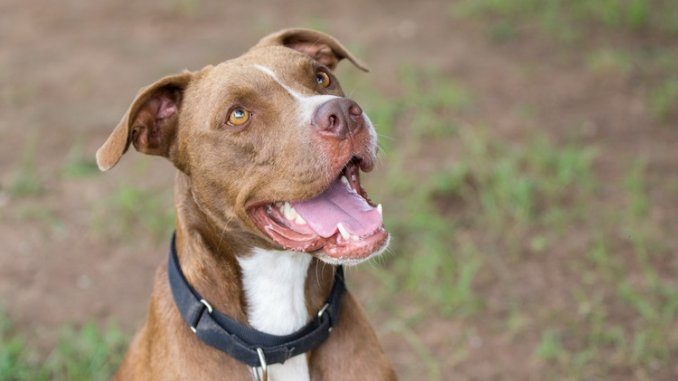
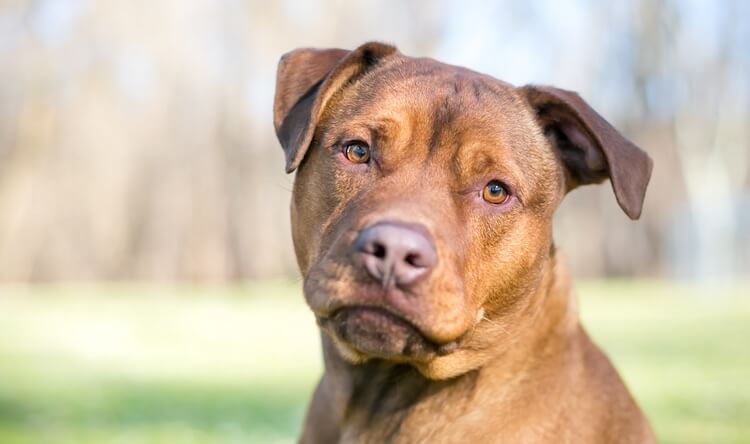
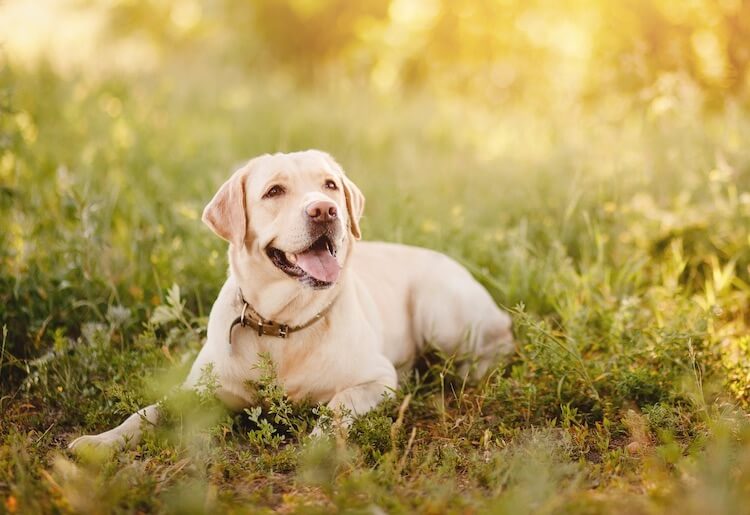

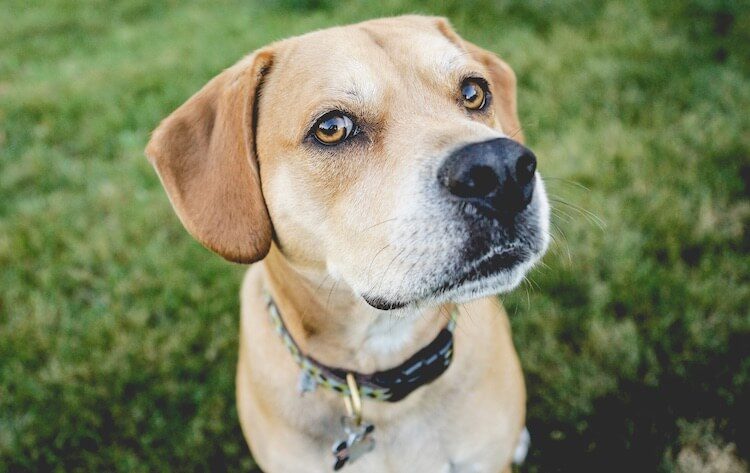
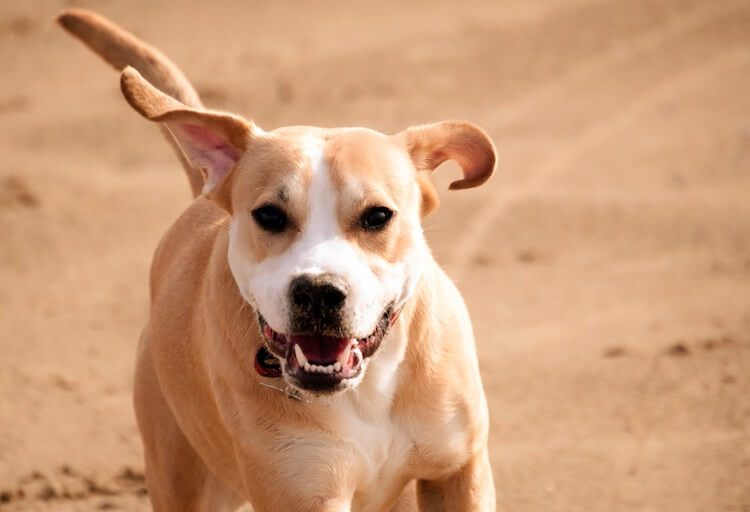
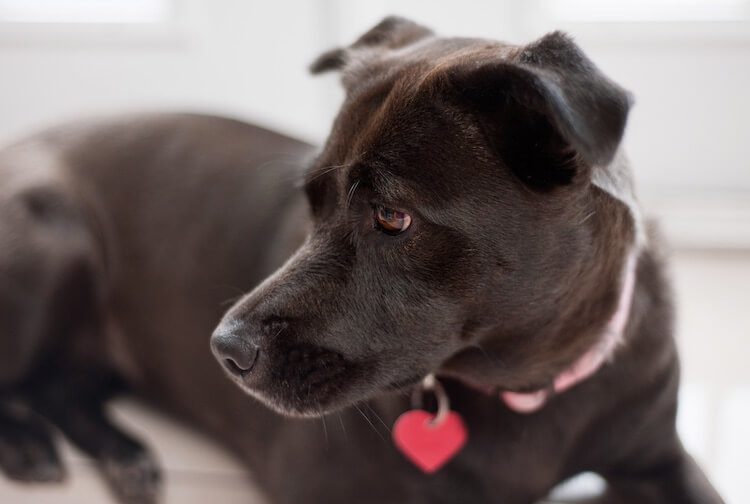
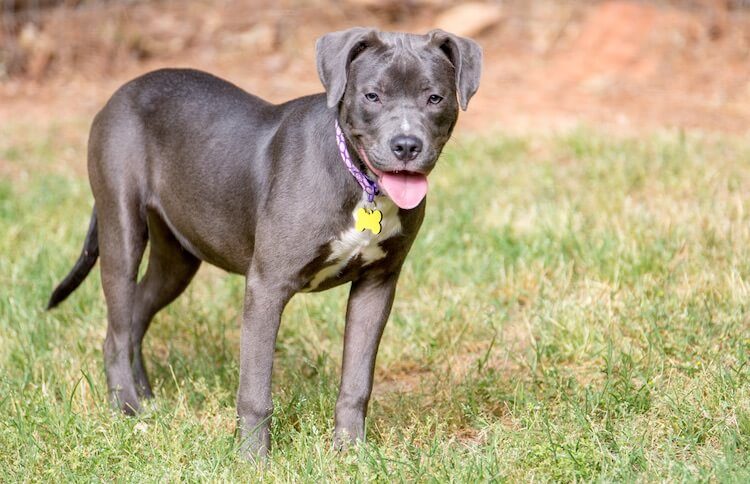

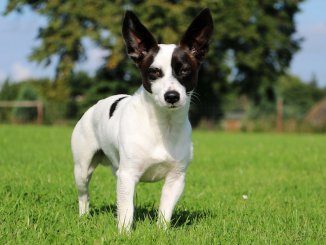
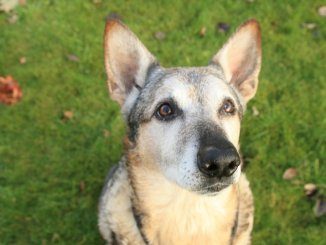
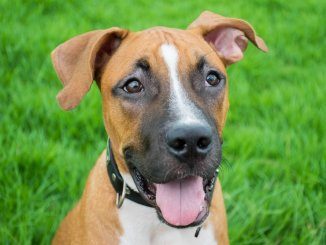
I have one of these and he is the sweetest lap dog in the world. I rescued him five months ago and love him. I walk him two to three times a day. I have a cat and he has never harmed my cat. Jethro is a wonderful addition to our home.
I just got this breed of puppy. She is so playful and loving. She tried to sleep with my cat! I have three boys, 10, 7, and 6. She absolutely loves them and licks them constantly. She’s already learning to use a puppy pads and whines when she needs to go potty.
My Labrabull rescued herself after spending a month in coyote territory after having been dumped. Se adopted two small black kittens who sleep with her. Her best buddy in a large cat who takes walks with her. She is sassy, but will listen to a stern voice. She refuses to bark, probably a remnant from her previous keeper. Being trained as a Therapy Dog for visits to a local Children’s Hospital. Loves to chew her soft toys and ‘eat their brains’. Hates baths and refuses to swim.
I owned a labrabull for 11 years she was everything that they say this breed of dog is. She was extremely loyal to my family and myself. I got her when she was 2 years old and all 3 of my children have been raised with her. My oldest son was 1 1/2 when I got her and I’ve had 2 more raised with her since then. This dog breed is like they say very protective she would alert us to anyone that pulled into the driveway and if she didn’t know you look out she would make you second guess getting out of you vehicle but she was all bark and no bite. As soon as she would recognize who it was all she wanted was her tummy rubbed. My son loves fishing and I have a creek in the backyard we live in country but she was always down there with him. And if my 2 daughters were outside she would sit in a place where she could see all 3 kids all the time. I think she seen them as her babies as well. The only thing that in the eleven years I had her that she wouldn’t do was swim. She hated the water completely. I tried to get her to come in the water with me but she wanted no part of it. The only times I actually got her in the water was when I had my son pretend to be drowning and without hesitation she ran and leaped rite in the creek and dragged him back to shore. The creek was only 2 foot deep and he was not in any danger but she thought he was and she leaped in without even thinking twice. So yes there protective instincts and there loyalty to you amd your family is extremely true. I’m very confident in saying that she would have died trying to save us if it had ever come to that. Unfortunately my girl passed away on Dec 5th 2020 due to cancer. But she was a protector until her final moments. In my opinion if you are looking at this dog breed to be the next member of your family then look no more. This breed of dog is everything they say and so much more.
I have one as a gift from my brother. He rescued her from the pound when she was like 3 months old. She used to be very active and now has slowed down their exercise, but still loves walks and car rides. The only big problem you will find is that indeed she is always hungry. She will always try to put her best poor hungry puppy face to get some scraps and now, that she is living full time inside the house, as gained some weight and pain on their legs and is under a strict diet. So keep an eye on your labrabull food intake and exercise levels and you will have one of the best companions in the canine world.